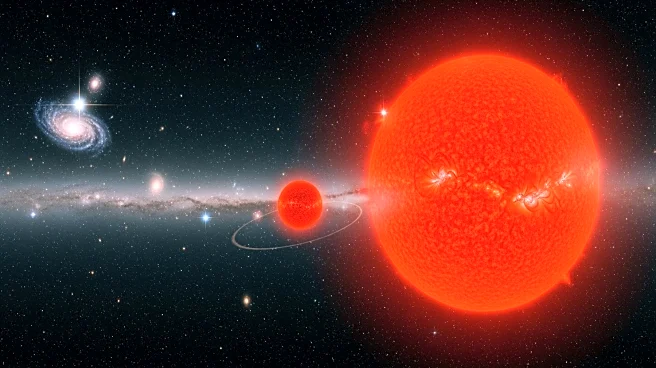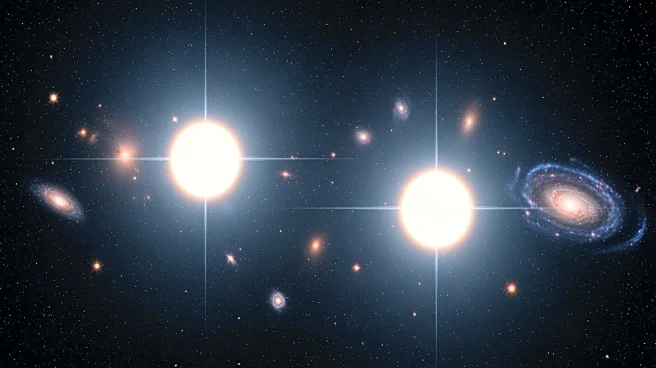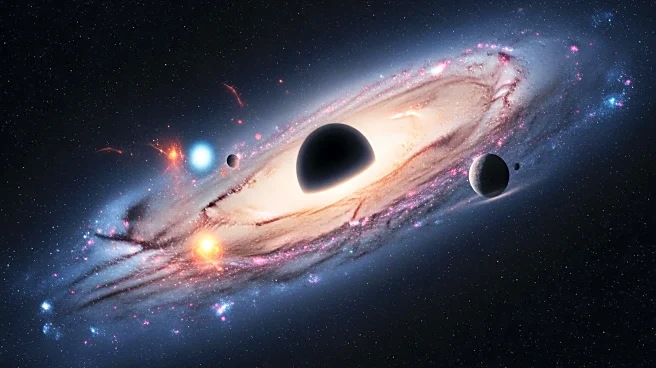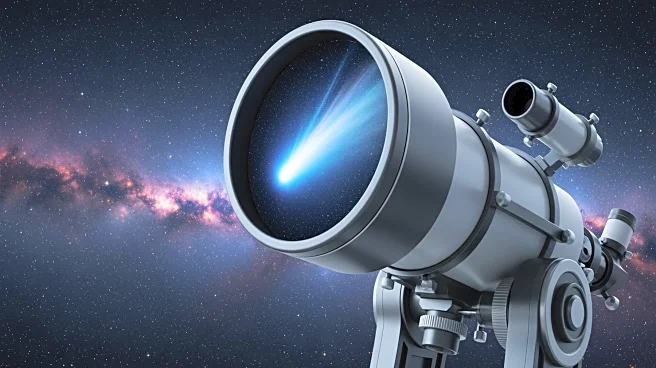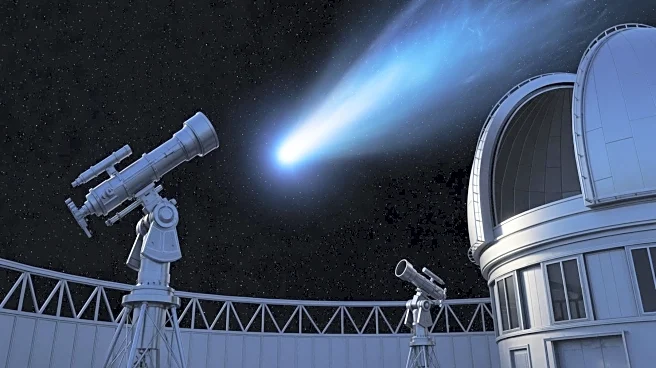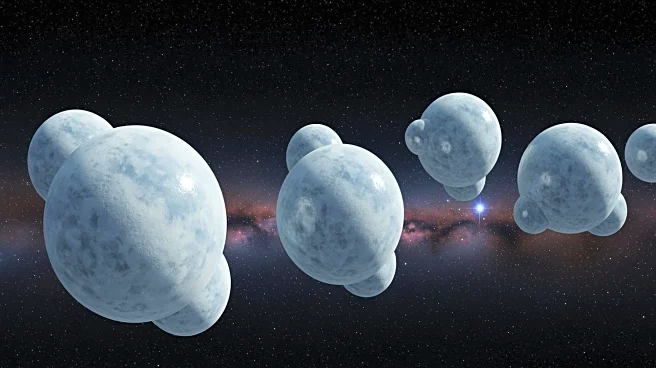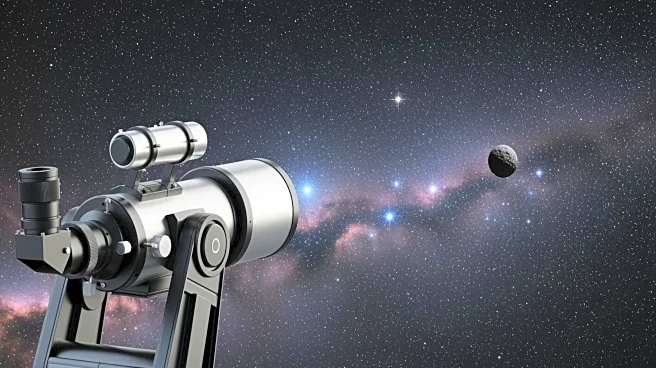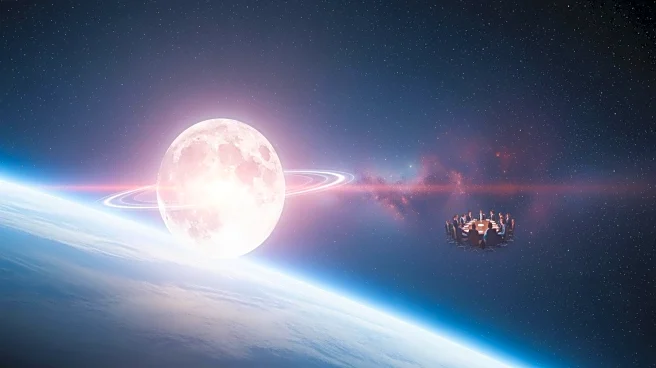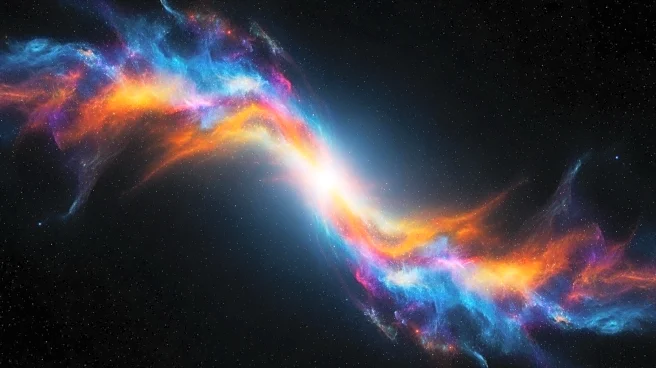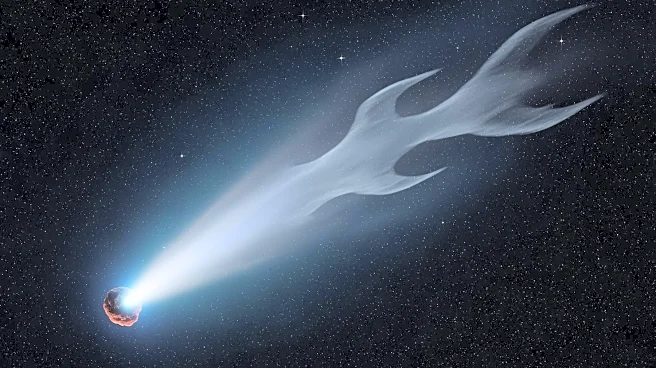What's Happening?
Astronomers have confirmed the existence of 'Betelbuddy,' a companion star to Betelgeuse, a red supergiant nearing the end of its stellar lifespan. Recent studies using NASA's Chandra X-ray Observatory
and the Hubble Space Telescope have revealed that Betelbuddy is likely a young stellar object about the size of our Sun. This discovery challenges previous assumptions about the star's composition and its relationship with Betelgeuse. The Gemini North Telescope in Hawaii captured a faint image of Betelbuddy, highlighting the significant brightness difference between the two stars. Researchers are excited about the implications of this discovery, as it opens up new possibilities for understanding binary star systems.
Why It's Important?
The discovery of Betelbuddy is significant as it challenges conventional ideas about binary star systems, particularly the assumption that such pairs generally resemble each other in mass. Betelgeuse is estimated to be 15 to 18 times the mass of Betelbuddy, indicating a new class of binary stars with extreme mass ratios. This finding could lead to a deeper understanding of stellar evolution and the dynamics of star systems. The research community is eager to explore these new possibilities, which could have implications for astrophysics and our understanding of the universe.
What's Next?
Betelbuddy is expected to remain out of detection range for the next two years, but astronomers are preparing for its return in November 2027. During this time, they plan to gather more data to further understand the star's characteristics and its relationship with Betelgeuse. The continued study of Betelbuddy could provide insights into the formation and evolution of binary star systems, potentially leading to new discoveries in the field of astronomy.
Beyond the Headlines
The discovery of Betelbuddy not only challenges existing theories but also highlights the advancements in observational technology and techniques. The ability to detect such faint objects demonstrates the progress in astronomical research and the potential for future discoveries. This event underscores the importance of continued investment in space exploration and research, as it can lead to groundbreaking findings that reshape our understanding of the cosmos.
